The Historical Story of Brazilian Coffee Distribution, altitude Environment and Flavor and Taste characteristics of Brazilian Coffee beans
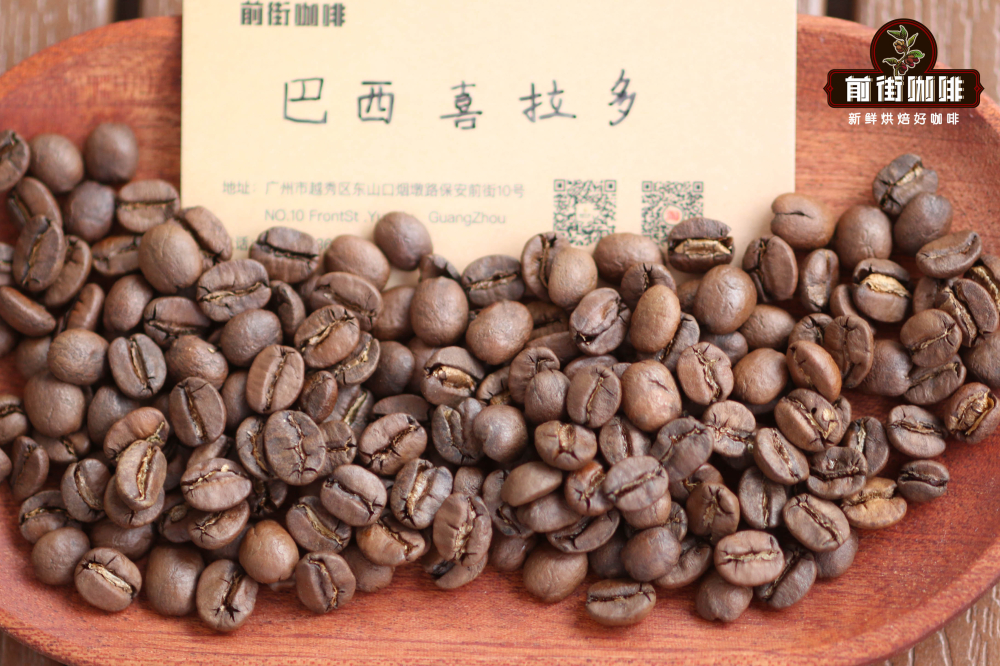
Brazilian coffee has been ranked first in coffee exports for more than 100 years due to its high production. Most boutique coffee shops stock at least one Brazilian single-serve coffee or Italian blend containing Brazilian coffee, showing how much it affects the coffee world as a whole. In this article, I will share the relevant knowledge points of Brazilian coffee in the front street.
Brazilian Coffee Story
The earliest recorded history of coffee cultivation in Brazil dates back to the eighteenth century, when Brazil belonged to Portugal. Francisco Palletta, a Portugal captain from Brazil, captured the wife of the governor of Cayenne, the capital of French territory Guinea, and brought coffee seeds to Brazil from there. Coffee quickly adapted to Brazil's terroir, gradually spreading from the north to the southeastern state of São Paulo, and began to be widely cultivated. By 1845, Brazilian coffee production accounted for 45% of the world's coffee production and became the main economic income of São Paulo.
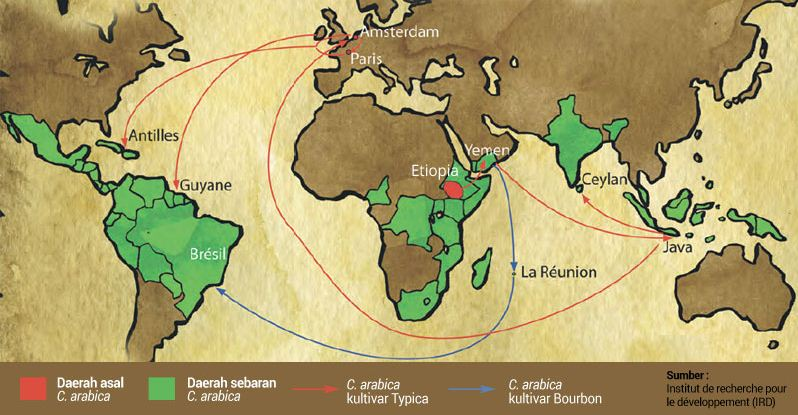
Distribution of coffee beans in Brazil
According to the Brazilian Coffee Association, coffee is produced in more than 14 states, with seven states producing the largest amount of coffee, close to 90% of the country's total. We can notice from the picture that Robusta varieties are mainly planted in the west, while Arabica with better quality is mainly concentrated in the southeast. Here, Front Street mainly introduces two representative coffee producing areas: MINAS GERAIS, Brazil's largest coffee producing area, and SÃO PAULO, Brazil's earliest coffee growing area.
Minas Gerais produces nearly half of the country's coffee beans annually and consists of four large producing areas: Cerrado, Sul de Minas, Chapada de Minas and Matas de Minas. The Cerrado region of the same name as the Sierra Prairie, in particular the Cerrado region in western Minas Gerais, is very suitable for large-scale management of harvesting due to its flat terrain and concentration of harvesting season. Many exporters invest in coffee farms here, covering an area of almost 10 hectares or more. The other three areas are dominated by smallholder artisanal production due to high and low terrain and steep hills.

The state of São Paulo encompasses Brazil's best-known coffee-producing region, Mogiana Mogiana, named after the Mogiana Railroad Company, which founded the Coffee Railway in 1883. It also led to better modes of transportation, where coffee production expanded further. The elevation of Mojiana producing area is 900- 1100 meters, the average temperature of the whole year is about 20℃, and it has a hilly terrain, which makes coffee have good sweet feeling and balance. Due to the terrain, the manor production is mainly artificial harvest. The Queen's Manor coffee on the front street bean list is from Morgiana.
Fazenda Rainha is one of the finest estates in Brazil. As a winner of the first Brazilian COE competition, its strength is extraordinary. Over the years, it has also won many large and small rankings, all thanks to the high quality coffee produced by Queen Manor. Front Street Brazilian Queen Estate Coffee is selected from the yellow bourbon variety, a variety of bourbon grown in Brazil, due to the influence of its recessive gene, which makes the fruit yellow. Yellow Bourbon coffee beans are sweet, clean, well-balanced and have tropical fruit aromas.
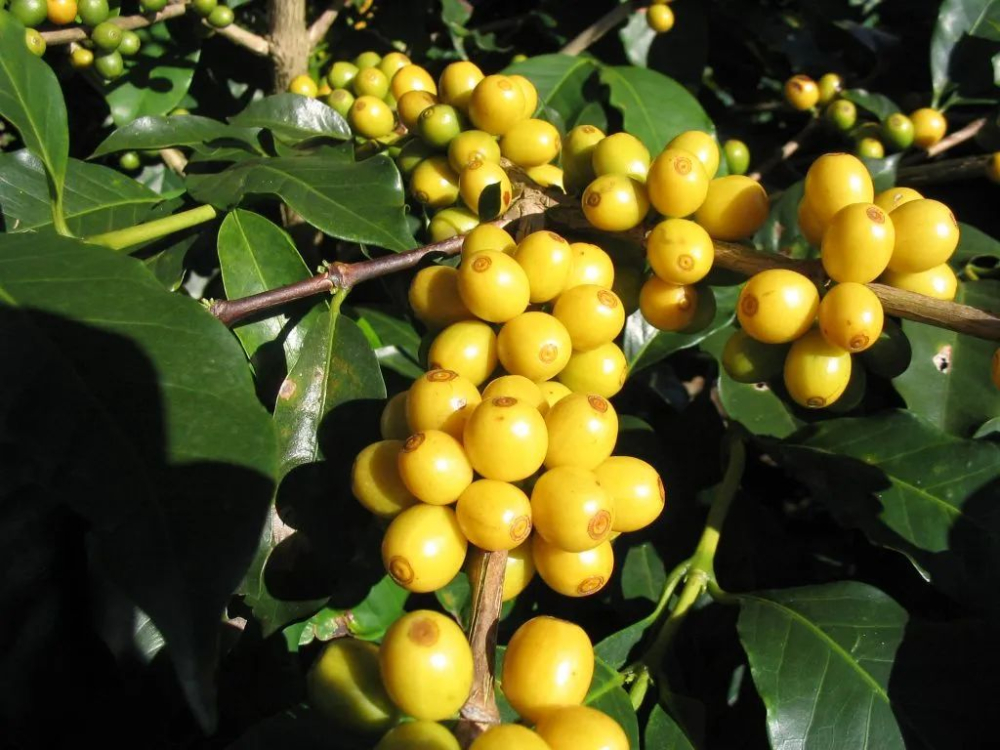
Brazilian Coffee Green Bean Treatment
In tropical Brazil, coffee fruits can be dried directly by sun because of the dry season of harvest. However, the traditional solarization process is very rough. After picking, it is directly dried on the mud ground, and the coffee produced is easy to mix with the mud flavor. In order to improve the quality of coffee, Brazil invented semi-washing (semi-sun method) after 1990, also known as Pulped Natural.
Treatment process: picking coffee fruit leaves, stones and other miscellaneous flavor, pour into the sink through flotation to pick out the fruit maturity is insufficient. Remove the peel, pulp and part of the colloid layer with a machine, and then wash for an hour. Due to the short fermentation time, pectin is not easy to wash off completely. Spread the shelled beans with some pectin in the sun to dry.
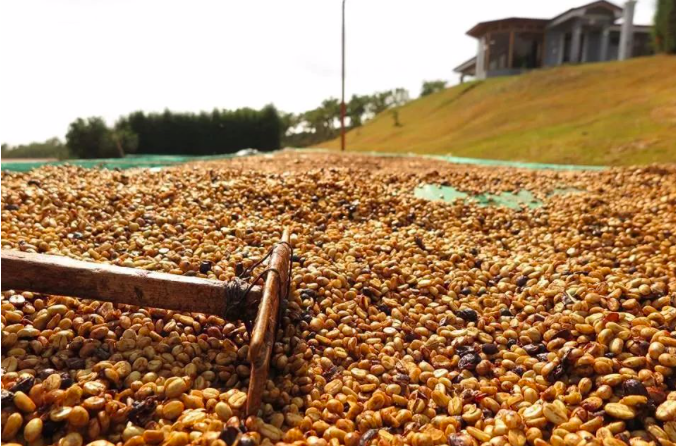
The semi-sun method not only saves water resources, but also saves a lot of labor costs. Compared with traditional sun drying, it also takes less time, so it is widely used in Brazil. The Brazilian Xiladuo ration beans on the front street are semi-sun treated, and the cleanliness of coffee beans is greatly improved by multi-link screening. Another Queen Manor coffee bean on the front street is treated with exquisite small batches of sunlight. Mass production may cause excessive fermentation due to untimely turning, resulting in poor fermentation flavor. The whole drying process of Queen Manor beans is carried out on African elevated beds, thus avoiding earthy taste and fermented taste. Its sweetness is also higher than that of traditional semi-sunlight.
Processed Brazilian green beans are graded according to three different criteria: blemish, size and cup test, which is a more complex grading system in Brazil than in other coffee-producing countries. The grade information of green coffee beans will be marked on the sack in the form of "country + defect grade + cup taste + specification size + cup flavor grade + origin".
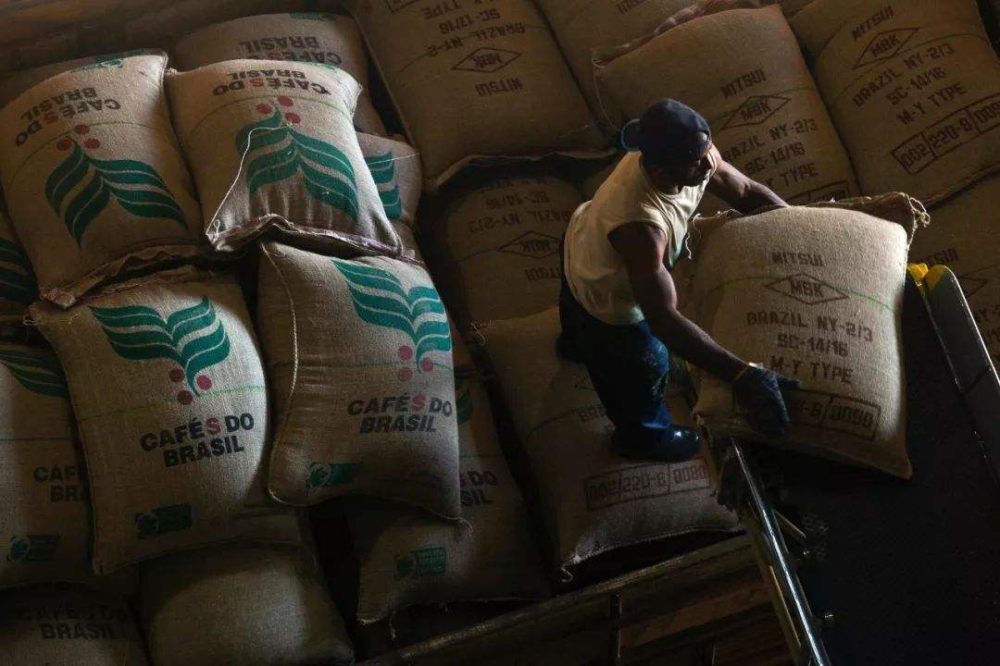
For example, the bag of Brazilian Xilado coffee beans purchased on the front street reads "Brazil NY.2 SC-17 ~ 18 FC Cerrado", which refers to the Brazilian Xilado region, the specification size is 17~18 mesh, SC stands for Strictly Soft, the taste is very soft, FC stands for Fine Cup, the cup test flavor is high quality, the defect rate grade is NY.2. Since NY.1 means not a single defective bean, such a carefully selected batch would not be available consistently, Brazil sets NY.2 as the highest level of defect classification.
Brazilian coffee flavor characteristics
Classic Brazilian coffee has a nutty, cocoa, chocolate, toast base flavor, so the two Brazilian coffee beans in the front street are medium to deep roast, highlighting its rich and low acid characteristics.
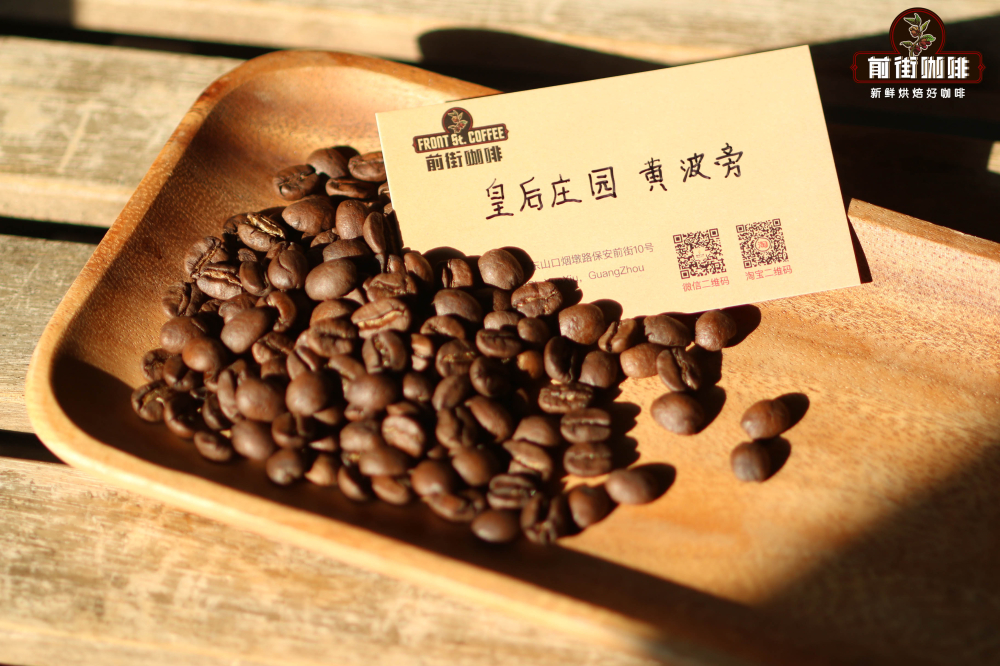
Some friends bought coffee beans and went home for brewing. They found that the flavor was different from that tasted in the store. The label of each bag of coffee beans in the front street would have a two-dimensional code about brewing. You can check it by scanning. You can refer to the brewing parameters above for adjustment. The following is an example of Queen's Coffee in Brazil, telling about the brewing ideas of the Front Street Barista.
Queen's Estate Coffee on Front Street is medium dark roast. Moderately roasted coffee changes the internal structure of the beans to a large extent, becoming loose and more absorbent when ground into coffee powder. If you don't adjust the brewing parameters, coffee will easily over-extract bitterness. If you want coffee to have enough aroma but not extract, you need to reduce the extraction rate. Qianjie will use a lower water temperature and a coarser grinding degree to reduce the release of bitter macromolecules in coffee.
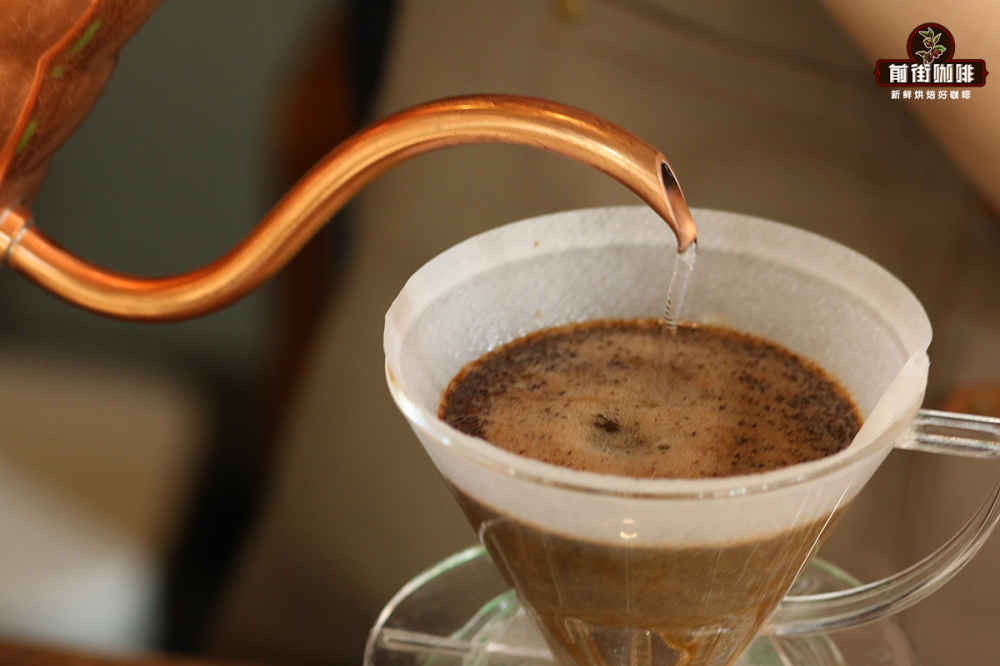
Front Street Baristas consistently use KONO filter cups to extract coffee beans that express body. KONO filter cup only exhaust part is in that quarter rib, when the water level over the rib part, filter cup water volume continues to rise, through the weight of the water to increase pressure, because the outlet is relatively small, can prolong the coffee particles and water contact time, as the water flow into more effective soluble substances, thus improving the rich taste of coffee.
Hand washing parameters: 87~88°C water temperature medium grinding (Chinese standard 20 sieve pass rate 70%) Coffee powder: 15 grams of powder water ratio 1:15 three-stage water injection
Wet the powder bed with twice the amount of coffee powder, form a bulge and steam for 30s, then inject small water flow from inside to outside to 125g, wait for the powder bed to drop to half of the filter cup, continue to inject the same small water flow into the third section to 225g, until all the coffee solution is filtered and removed from the filter cup, about 2 minutes. Finally shake up the coffee in the pot and start enjoying ~

The hand-brewed Brazilian Queen Manor coffee is overall mellow and rich, with a clean taste, and the flavor changes with temperature and the layers are variable. Nutty and caramel aromas with chocolate, nutty and caramel aromas. Sugar cane is pleasant and balanced.
Professional coffee knowledge exchange More coffee bean information Please pay attention to coffee workshop (Weixin Official Accounts cafe_style)
More fine coffee beans, please add private WeChat Qianjie Coffee, WeChat: qjcoffeex
Important Notice :
前街咖啡 FrontStreet Coffee has moved to new addredd:
FrontStreet Coffee Address: 315,Donghua East Road,GuangZhou
Tel:020 38364473
- Prev
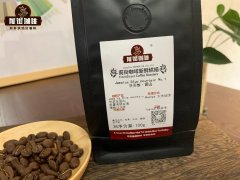
What is the exhaust valve coffee bag one-way exhaust valve role of coffee beans exhaust and oxidation
I believe that people who love coffee have had the experience of buying coffee beans, and we all know that the degassing valve is an important part of coffee packaging. Roasted coffee beans are very susceptible to oxidation, which can cause coffee to lose flavor and degrade coffee oils. Therefore, roasted coffee beans should be kept in a closed, low-temperature environment and avoid strong light. So the exhaust valve goes to
- Next
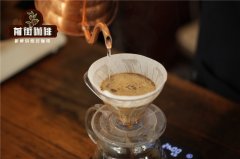
How to deal with bubbles in coffee Why do fresh coffee beans need exhaust Coffee spoilage reasons
When bubbles appear in coffee, this foam or bubble is formed by the carbon dioxide released from the coffee grounds. It is called coffee flower. The gas is trapped during baking and then released when water is added. It doesn't affect the taste of coffee, it doesn't mean anything bad.
Related
- Detailed explanation of Jadeite planting Land in Panamanian Jadeite Manor introduction to the grading system of Jadeite competitive bidding, Red bid, Green bid and Rose Summer
- Story of Coffee planting in Brenka region of Costa Rica Stonehenge Manor anaerobic heavy honey treatment of flavor mouth
- What's on the barrel of Blue Mountain Coffee beans?
- Can American coffee also pull flowers? How to use hot American style to pull out a good-looking pattern?
- Can you make a cold extract with coffee beans? What is the right proportion for cold-extracted coffee formula?
- Indonesian PWN Gold Mandrine Coffee Origin Features Flavor How to Chong? Mandolin coffee is American.
- A brief introduction to the flavor characteristics of Brazilian yellow bourbon coffee beans
- What is the effect of different water quality on the flavor of cold-extracted coffee? What kind of water is best for brewing coffee?
- Why do you think of Rose Summer whenever you mention Panamanian coffee?
- Introduction to the characteristics of authentic blue mountain coffee bean producing areas? What is the CIB Coffee Authority in Jamaica?

